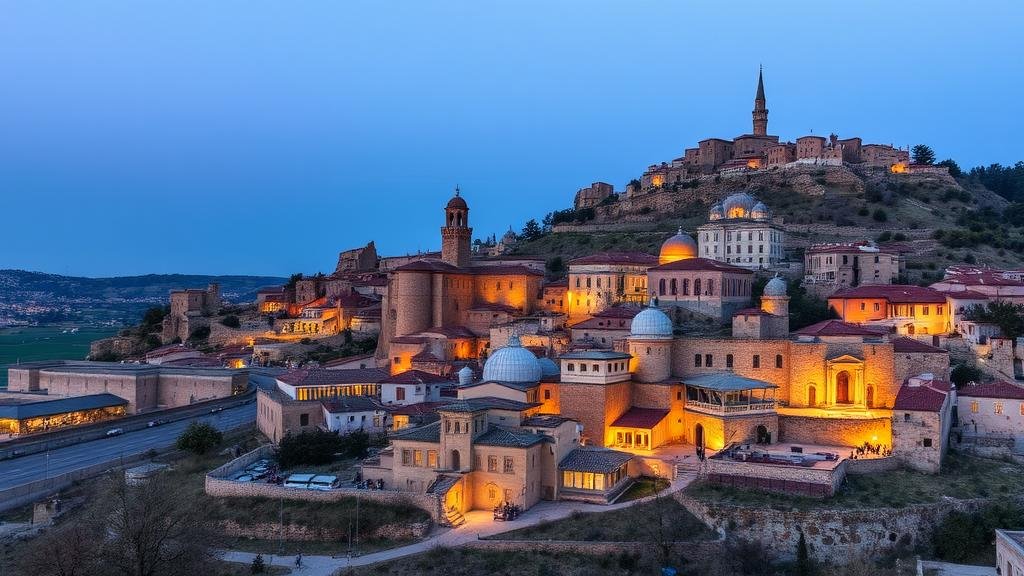Exploring subterranean networks in Cappadocia for evidence of larger underground cities beyond Derinkuyu.
Exploring Subterranean Networks in Cappadocia for Evidence of Larger Underground Cities Beyond Derinkuyu
Cappadocia, located in central Turkey, is renowned for its unique rock formations and rich history. Among its most fascinating features are the underground cities, with Derinkuyu being the largest and most celebrated. But, emerging research suggests that more extensive subterranean networks exist beyond Derinkuyu, hinting at an intricate history of habitation that might reveal even larger underground cities.
A Brief Overview of Cappadocias Underground Cities
The history of Cappadocias underground cities dates back to the Hittite era around 1200 BCE. e subterranean networks were primarily carved out of the regions soft volcanic tuff, creating an ideal environment for construction. The complex network of tunnels and living quarters served as a refuge during invasions and provided a means of shelter from harsh weather conditions. Scholars estimate that over 200 underground cities exist in the region, with Derinkuyu and Kaymaklı being the most notable examples.
Derinkuyu: The Crown Jewel of Subterranean Architecture
Derinkuyu, discovered in 1963, reaches depths of approximately 60 meters and could house around 20,000 people, complete with ventilation shafts, wells, food storage rooms, and even chapels. extensive passageways and strategically placed stone doors demonstrate advanced engineering skills and an understanding of defensive architecture. The citys design allowed inhabitants to survive prolonged sieges, utilizing communal living spaces and maintaining organic food supplies sourced from the surrounding landscape.
Beyond Derinkuyu: The Search for Larger Networks
While Derinkuyu draws significant tourist attention, recent archaeological efforts aim to uncover evidence of other large underground settlements. Researchers believe that these cities could represent a more extensive network, primarily prompted by historical accounts and newly developed archaeological techniques.
- The discovery of a concealed entrance near Derinkuyu in 2020 led excavators to broaden their searches into adjacent locations.
- As early as 2018, systems utilized in remote sensing technology produced anomalies that suggest potential hidden chambers in the region.
Comparative Analysis of Underground Cities
While Derinkuyu serves as the primary model, comparisons with Kaymaklı and other sites reveal similar architectural styles but different capacities and designs. Kaymaklı, for instance, extends across eight levels and is known for its impressive ventilation systems that indicate a high level of sophistication in urban planning. Evidence suggests that these cities were interconnected, possibly providing strategic escape routes or communal gathering spaces.
- Kaymaklıs surface area is significantly larger than that of Derinkuyu, further intensifying speculation about its relationship with nearby underground systems.
- Many of these interconnected dwellings share design features, such as storage rooms, which implies a common cultural background and societal structure.
Potential Implications for Historical Understanding
The existence of additional underground cities poses intriguing questions regarding the lifestyles of the people who resided there. Were these cities strictly defensive measures, or did they represent a communal way of life? Such questions challenge historians to reconsider the socio-political dynamics of the region through different historical periods, including the Byzantine and Roman eras.
Plus, the archaeological exploration of these networks could provide evidence of migration patterns, trade routes, and cultural exchanges that shaped the regions history. data acquired may lead to new interpretations of ancient texts and artifacts found throughout Cappadocia.
Actionable Takeaways for Future Exploration
As researchers continue to explore the Cappadocia region, a few key areas of focus could enhance our understanding of these underground marvels:
- Utilizing advanced geophysical methods for subsurface imaging to locate unexcavated networks.
- Engaging in interdisciplinary studies that merge archaeology with geology, anthropology, and history to create comprehensive narratives.
- Collaborating with local communities for shared knowledge and potential discoveries related to folklore and historical accounts.
To wrap up, the exploration of Cappadocias subterranean networks beyond Derinkuyu offers a tantalizing glimpse into an ancient and complex civilization. As researchers delve deeper into this fascinating area, they may reveal a larger narrative about the people who inhabited these incredible underground cities, altering our understanding of the regions historical significance.


